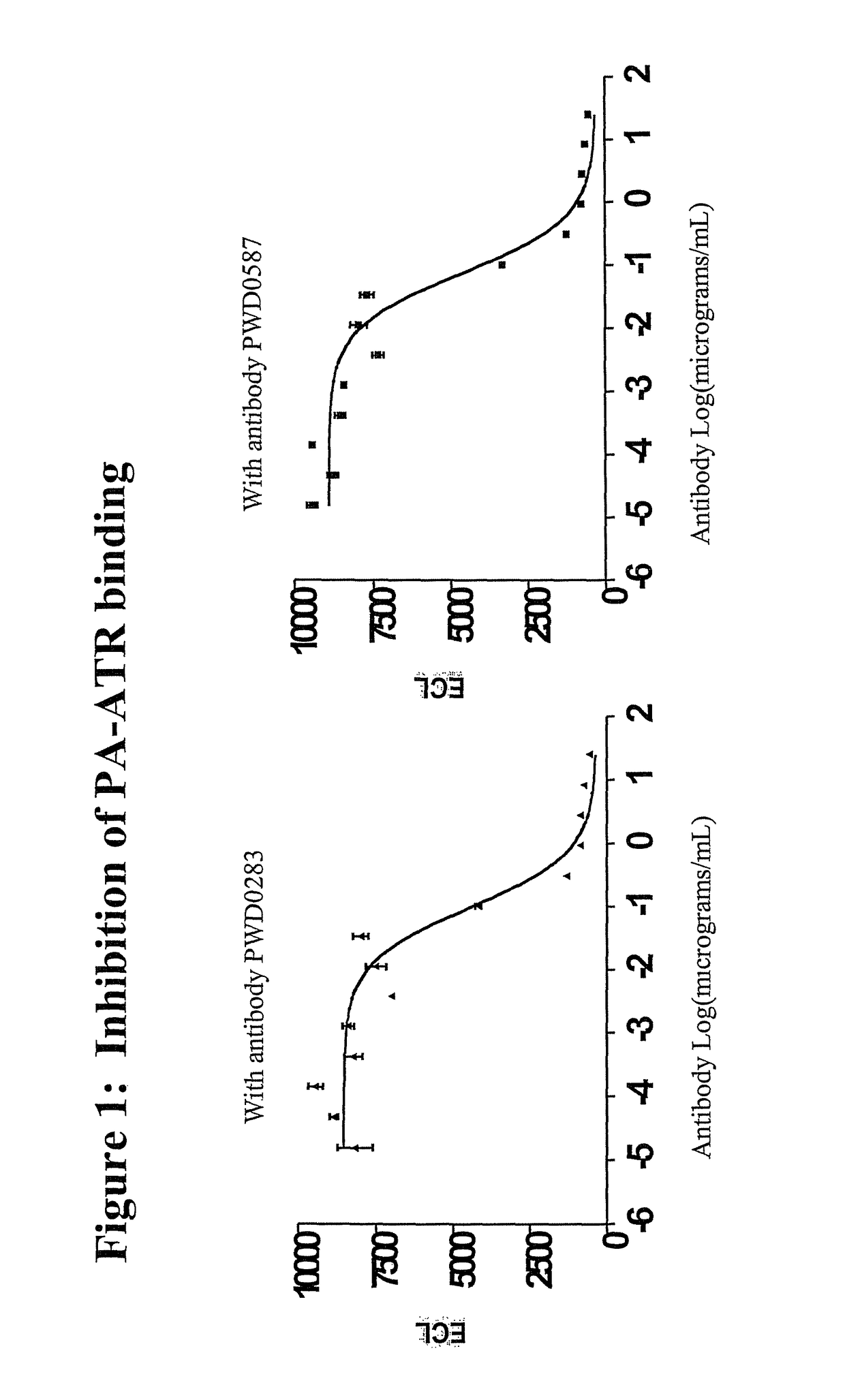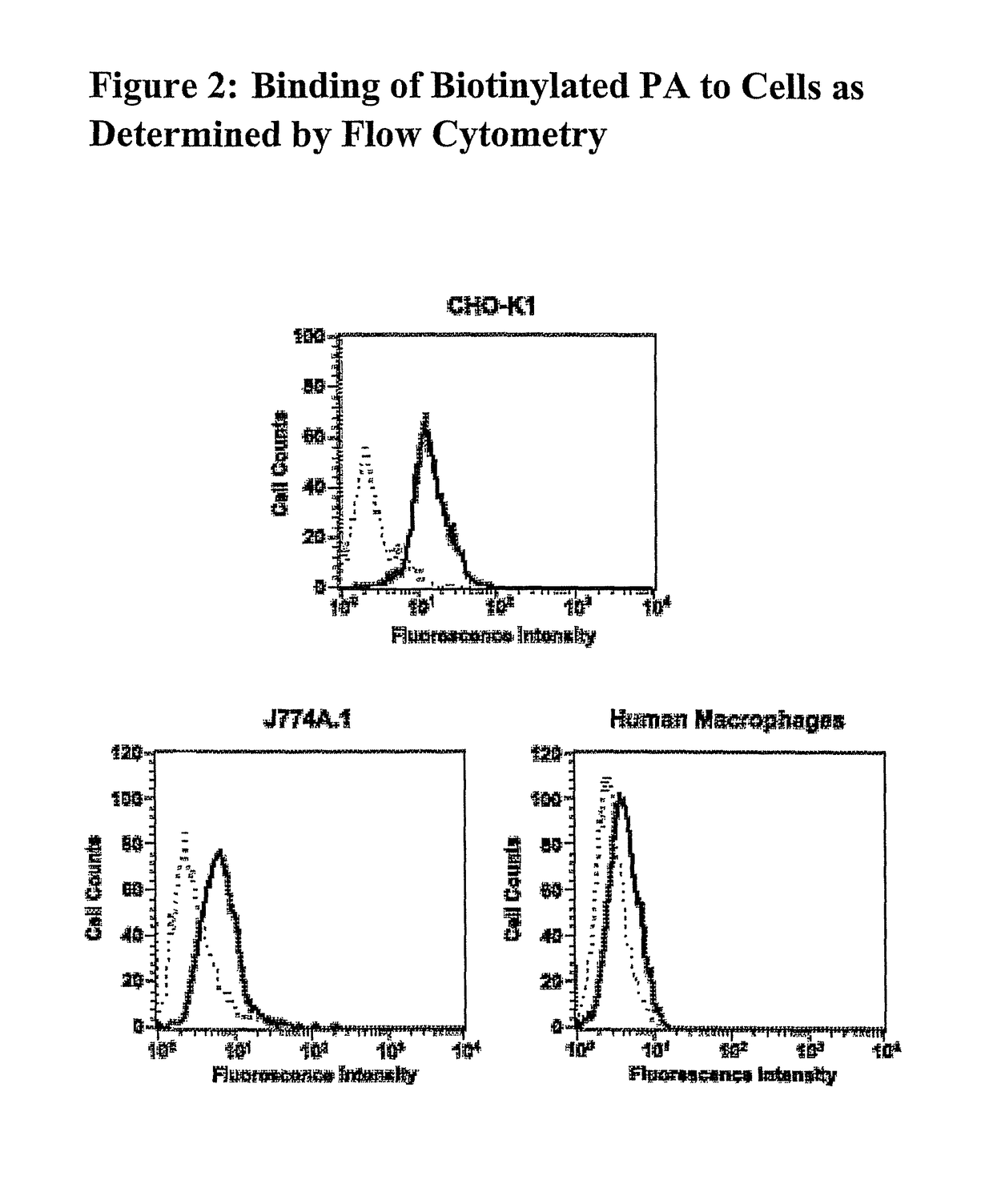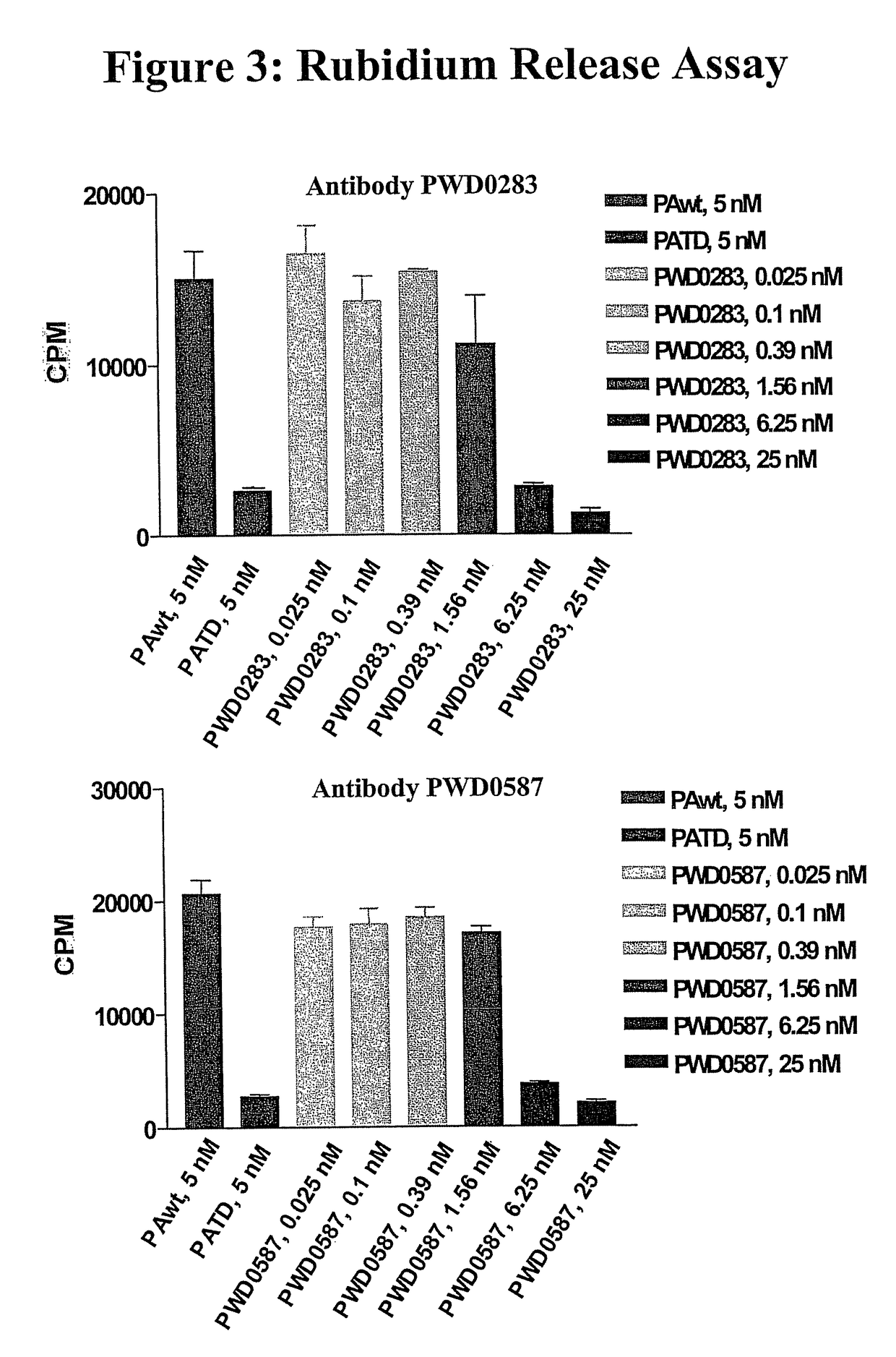Antibodies against protective antigen
a technology of antibodies and antigens, applied in the field of antibodies and related molecules, can solve the problems of infected tissues swelling, and achieve the effect of enhancing the activation of the alternative complement pathway and efficient killing of bacteria
- Summary
- Abstract
- Description
- Claims
- Application Information
AI Technical Summary
Benefits of technology
Problems solved by technology
Method used
Image
Examples
example 1
Isolation and Characterization of scFvs Referred to in Table 1
[0351]Maxisorp tubes (Nunc) were coated overnight with 10 micrograms / ml of PA83 protein in PBS at 4° C. Unbound PA was removed by washing the tubes with 1×PBST and 1×PBS followed by filling the tubes with a 3% milk solution in 1×PBS for one hour to block any exposed tube surface. Approximately 1013 TU of phage from phage display libraries available from Cambridge Antibody Technology (Cambridgshire, United Kingdom) diluted in 3% milk / 1×PBS was applied to the tube and incubated for at least 60 minutes at room temperature. Tubes were washed 10 times with PBS 0.1% Tween-20 and 10 times with PBS. Phage are eluted by adding 1 ml of 100 mM triethylamine with gentle shaking after which the solution is immediately neutralized with 0.5 ml of 1.0M Tris-HCl, pH 7.4. Phage were then used to infect 10 ml of mid-log E. coli TG1 by incubating eluted phage with bacteria for 30 minutes at 37° C. The E. coli were then plated on 2XYT plates ...
example 2
Affinity Ranking of mAbs to PA and PA Cleavage Site Peptide ELISA
[0357]Theoretical considerations suggest that under ideal circumstances antibody concentration at half-maximal antigen binding (EC50) is a measure of affinity. In practical terms it can be used to rank the affinities of antibodies to quickly identify best binders. The lower the antibody concentration required for 50% of plateau binding, the higher is the affinity of the antibody for antigen. In the approach described below, a conventional ELISA is used to generate binding isotherms for PA antibodies in order to derive their EC-50 values. Additionally, antibodies may be tested for their ability to bind peptides that span the RKKR (residues 193-196 of SEQ ID NO:2) cleavage site in PA.
EC-50 ELISA
[0358]Direct Plate Coating with PA: 50 microliters of PA solution (0.2 μg / ml in PBS) is dispensed to individual wells of 96-well plates (Immulon-2, Dynex) sealed with Plate sealers (Advanced Genetic cat. #48461) and incubated over...
example 3
Inhibition of Biotinylated PA Binding to Anthrax Receptors
[0366]The following protocol may be used to test whether an antibody is able to inhibit the binding of biotinylated PA protein to the anthrax receptor protein (SEQ ID NO:3).
[0367]Preparation of ATR Protein
[0368]ATR protein was produced by cloning the first 227 amino acid residues of the ATR protein gene (SEQ ID NO:3, Bradley et al, (2001) Nature 414:225-229) linked to a polynucleotide encoding the FLAG® tag (Stratagene, La Jolla, Calif.) (amino acid residues DYKDDDDK, SEQ ID NO:43) into a mammalian expression vector (Lonza Biologics). Recombinant soluble ATR protein was expressed from 293T cells by transient transfection. Three days after transfection, conditioned media were collected and the ATR protein with a flag-tag at the carboxy terminus was purified from the media sample by passing it through an anti-flag monoclonal antibody affinity column (Sigma).
[0369]Preparation of PA Protein
[0370]PA protein was produced from a syn...
PUM
| Property | Measurement | Unit |
|---|---|---|
| pH | aaaaa | aaaaa |
| pharmaceutical composition | aaaaa | aaaaa |
| pH | aaaaa | aaaaa |
Abstract
Description
Claims
Application Information
 Login to View More
Login to View More - R&D
- Intellectual Property
- Life Sciences
- Materials
- Tech Scout
- Unparalleled Data Quality
- Higher Quality Content
- 60% Fewer Hallucinations
Browse by: Latest US Patents, China's latest patents, Technical Efficacy Thesaurus, Application Domain, Technology Topic, Popular Technical Reports.
© 2025 PatSnap. All rights reserved.Legal|Privacy policy|Modern Slavery Act Transparency Statement|Sitemap|About US| Contact US: help@patsnap.com



